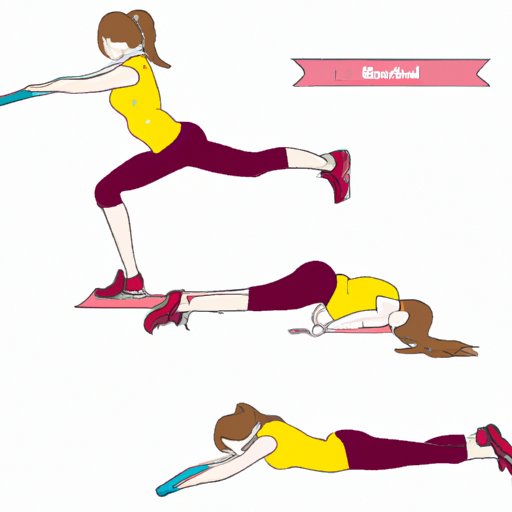
Aerobic exercise, often referred to as “cardio,” encompasses a range of physical activities that elevate the heart rate and enhance the body’s ability to consume oxygen over extended periods. While the benefits of aerobic exercise are widely recognized, the question of which activities fit this classification can sometimes lead to confusion. This guide aims to delineate various activities recognized as aerobic exercises, while also diving into the underlying reasons for their universal appeal. Understanding these can inspire a more dedicated pursuit of fitness through enjoyable means.
The primary hallmark of aerobic activities is their ability to promote cardiovascular endurance. Engaging in these exercises increases heart rates sufficiently to bolster oxygen circulation throughout the body, thus improving stamina and overall health. Below is a comprehensive examination of activities that are considered aerobic exercises, categorized, and expounded upon to illuminate their significance.
1. Traditional Aerobic Exercises
Among the most fundamental forms of aerobic exercise are those practiced in traditional settings, often accompanied by rhythmic movement that is easy to follow:
- Running and Jogging: These activities invite various levels of intensity, from leisurely jogs to more vigorous sprints, rendering them highly adaptable to an individual’s fitness level. Running not only fortifies cardiovascular health but also aids in weight management and the enhancement of muscular strength in the lower body.
- Walking: A more accessible form of aerobic exercise, walking invites individuals of all ages to engage in sustained movement. While it may seem simple, regular brisk walking can lead to substantial health benefits, including improved mood and enhanced mental acuity.
- Cycling: Whether stationary or on the road, cycling provides an efficient means to achieve cardiovascular benefits. The low-impact nature of cycling makes it particularly appealing for those with joint concerns, while still delivering substantial endurance benefits.
- Swimming: Renowned for its full-body engagement, swimming is a powerful aerobic exercise that places minimal stress on joints. It combines strength and endurance, making it an excellent choice for rehabilitation and fitness alike.
2. Group Fitness Classes
Modern fitness culture has given rise to a variety of group classes focused predominantly on aerobic activity. These classes not only provide motivation through community but also enhance the exercise experience:
- Zumba: Merging cardiovascular exercise with vibrant dance, Zumba fosters an engaging atmosphere where participants do not just exercise but also enjoy the rhythm of music. Its choreographed movements contribute to tremendous calorie burns while improving coordination.
- Aerobics: Traditional aerobics classes incorporate a mix of rhythmic stepping, high-tempo movements, and sometimes even light weights. This planned and structured activity ensures that participants are expending energy while developing core muscular strength.
- Spin Classes: Indoor cycling offers intense workouts focused on cycling techniques and rhythmic music. The collaborative spirit induced by a group spin class can transform the notion of working out from a solitary effort to an exhilarating community experience.
3. Sports as Aerobic Exercises
Many popular sports inherently promote aerobic conditioning, blending enjoyment with physical exertion:
- Soccer: This globally beloved sport demands continuous movement, requiring players to run, sprint, and change direction frequently. The endurance aspect of soccer provides extensive cardiovascular benefits along with teamwork and strategic thinking elements.
- Basketball: With its fast-paced nature, basketball integrates sprinting, jumping, and constant movement. The demands of the game challenge cardiovascular capabilities while promoting agility and flexibility.
- Tennis: A sport that combines varying movement patterns, tennis offers an effective aerobic workout. The nature of rallies, which necessitate quick bursts of speed and endurance, engages the cardiovascular system significantly.
4. Outdoor Activities
Venturing outdoors reveals a plethora of aerobic activities that leverage the environment while conferring the benefits of sustained exertion:
- Hiking: This immersive activity fosters an appreciation for nature while providing a robust aerobic workout. Hiking varies in intensity based on terrain, which can enhance cardiovascular fitness and muscle strength substantially.
- Rowing: Whether done on water or using a rowing machine, this dual-action exercise engages both upper and lower body muscles, providing a comprehensive aerobic workout. It emphasizes endurance while instilling a sense of accomplishment when navigating various water bodies.
- Skiing and Snowboarding: Winter sports incorporate aerobic exertion through continuous movement across various slopes. Skiing, in particular, engages multiple muscle groups, fostering coordination and cardiovascular health simultaneously.
5. High-Intensity Interval Training (HIIT)
HIIT has gained traction for its unique approach to aerobic exercise, involving short bursts of intense activity interspersed with rest or low-intensity periods. This method can dramatically increase aerobic capacity and has become synonymous with effective fitness transformations. Engaging in HIIT can elevate the heart rate significantly, encouraging both aerobic and anaerobic fitness improvements.
Conclusion
Identifying which activities qualify as aerobic exercises reveals a rich tapestry of options available to individuals seeking to enhance their cardiovascular health. From traditional exercises like running and swimming to engaging group classes and outdoor pursuits, the diversity of choices is remarkable. These activities offer both physical and psychological benefits, providing an avenue for individuals to explore their potential while fostering a sense of community and enjoyment. Delving into the aerobic realm invites exploration, setting the stage for lifelong engagement with health and well-being. As one embarks on this journey, the allure of movement continues to captivate, deeply entwining itself with the essence of human experience.
